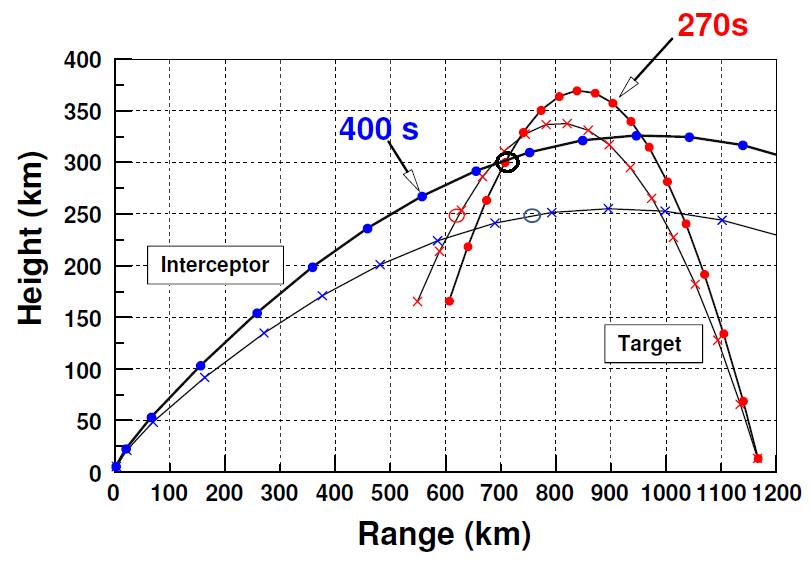Some of the best sleuthing and analysis these days is being done by the group at the Center for Nonproliferation Studies in Monterey at the Middlebury Institute of International Studies. So when Catherine Dill and Jeffrey Lewis emailed me to help fit a few pieces together I was happy to help.
They have been piecing together information about China’s Korla Missile Test Complex, which appears to be the base where China has launched interceptors for several recent missile defense tests. They are posting their analysis today at armscontrolwonk.
The question they had for me was whether data they had found on China’s January 27, 2013 missile defense test was consistent with an interceptor launch from the Korla site. That could be checked by modeling the flights of the interceptor and target missiles in the test and seeing if they could intercept at the time and altitude reported in the press. That’s what I looked at.
Information about the Test
From scouring press reports, Catherine and Jeffrey collected information about the test. They believe the target missile was launched from the Shuangchengzi Space and Missile Center (40.9622°N 100.2888E). The target missile is called a CSS-X-11 medium range missile in western reports.
The SC-19 interceptor was launched from Korla (41.5377°N, 86.3721°E), lifting off 2 minutes and 42 seconds after the target was launched.
The intercept reportedly occurred at an altitude of about 250 km, some 7 minutes and 31 seconds after the target launch.
At Jeffrey’s suggestion, I modeled the target missile roughly on the DF-16/CSS-11 Mod 1 missile. I assumed a one-stage solid-fueled missile with a maximum range of 800 km if flown on a minimum-energy trajectory.
The SC-19 interceptor booster is thought to be a variant of the CSS-5/DF-21. For this analysis I assumed a two-stage solid-fueled missile with a maximum range of 2,000 km.
The launch sites for the two missiles are 1,170 km apart. My computer model calculates the flyout trajectories with a round earth and realistic atmosphere.
Results of Modeling
I assumed that the target missile was fired in the direction of interceptor launch point, so that both trajectories lay in the vertical plane that includes both launch sites. Given the times above, the target missile was launched at t = 0, the interceptor was launched at t = 162 s, and the intercept occurred at t = 451 s.
Fig. 1 shows two trajectories of both the target (red) and interceptor (blue), launched with different burnout angles. The dots represent 30-second intervals, and the times marked are relative to the time of launch of the target missile.

Fig. 1. Two trajectories for both the interceptor (blue) and target (red) missiles. The dots show 30-second intervals, with the target missile launched at t = 0.
What this shows is that the two bold trajectories can intercept at a time of about 451 s (marked by the dark circle), at an altitude of 300 km and a range of 700 km from the interceptor launch site. The relative speed between the two objects at intercept is about 5 km/s.
The circles on the two lower trajectories show where the two objects are at 451 s. Both are at an altitude of 250 km, but they have passed each other. It would likely be possible to have the intercept occur at 250 km altitude if either or both of the missiles are somewhat slower (i.e., shorter range) than I have assumed. It appears from the figure that the intercept would still occur at a range of 600-800 km.
Another possibility is that the target missile was not fired directly toward the interceptor launch site so that intercept did not occur in a plane. If you imagine rotating the two lower trajectories somewhat out of the plane, you could arrange for these two missiles to intercept at 250 km altitude and still at 451 s. The intercept would still occur at a range of about 700 km from the interceptor launch site. This would allow an intercept at about 250 km altitude with the missile models I have assumed.
While a number of estimates go into this calculation, it adds confidence to the story Catherine and Jeffrey are putting together about Korla.
